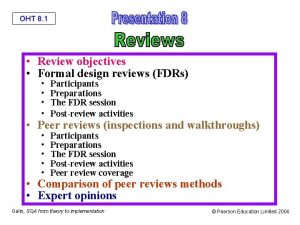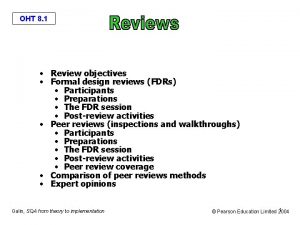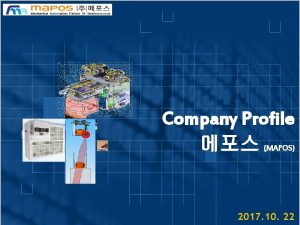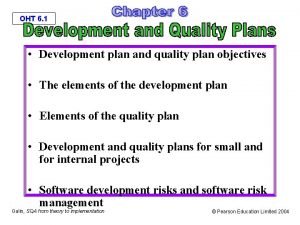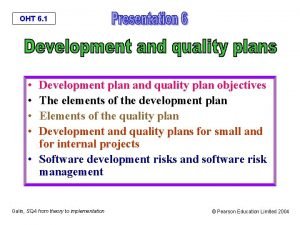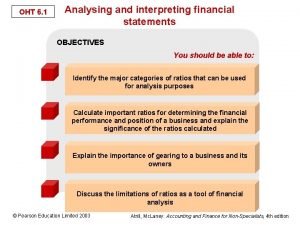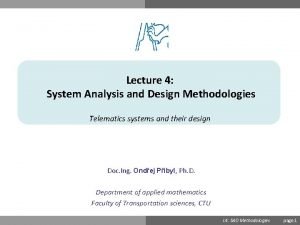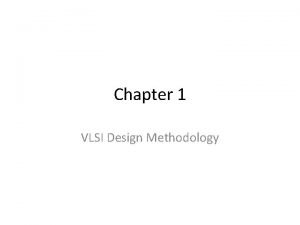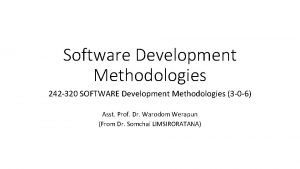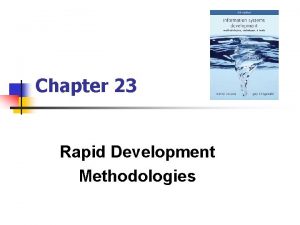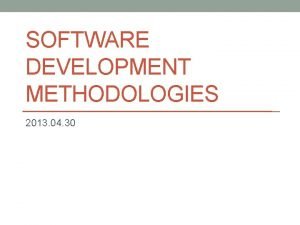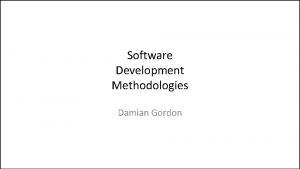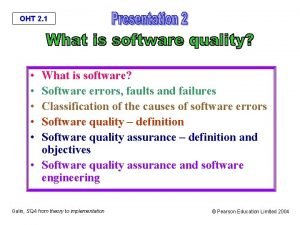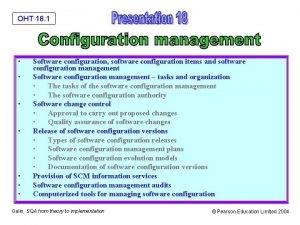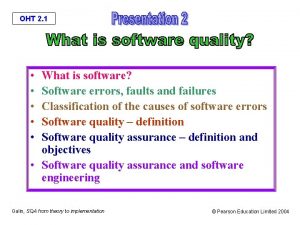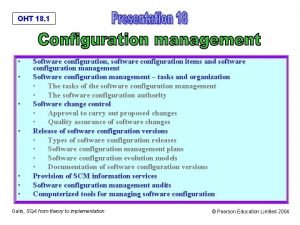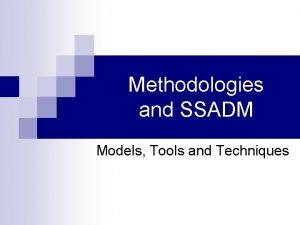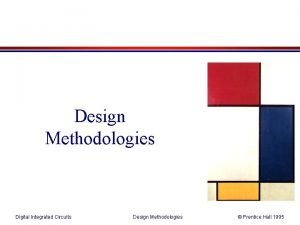OHT 7 1 Software development methodologies The software











- Slides: 11

OHT 7. 1 • Software development methodologies: - The software development life cycle (SDLC) model - The prototyping model - The spiral model - The object-oriented model • Factors affecting intensity of SQA activities • Verification, validation and qualification • Development and quality plans for small and for internal projects • A model for SQA defect removal effectiveness and cost Galin, SQA from theory to implementation © Pearson Education Limited 2004

OHT 7. 2 Galin, SQA from theory to implementation © Pearson Education Limited 2004

OHT 7. 3 Source: After Boehm 1988 (© 1988 IEEE) Galin, SQA from theory to implementation © Pearson Education Limited 2004

OHT 7. 4 Source: After Boehm 1998 (© 1988 IEEE) Galin, SQA from theory to implementation © Pearson Education Limited 2004

OHT 7. 5 Galin, SQA from theory to implementation © Pearson Education Limited 2004

OHT 7. 6 Project factors: • Project’s magnitude • Project's technical complexity and difficulty • Extent of reusable software components • Severity of failure outcomes if the project fails Team factors: • The professional qualification of the team members • Team acquaintance with the project and its experience in the area • Availability of staff members that can professionally support the team • Familiarity with the team members, in other words, the percentage of new staff members in the team Galin, SQA from theory to implementation © Pearson Education Limited 2004

OHT 7. 7 Verification – The process of evaluating a system or component to determine whether the products of a given development phase satisfy the conditions imposed at the start of that phase Validation - The process of evaluating a system or component during or at the end of the development process to determine whether it satisfies specified requirements Qualification - The process used to determine whether a system or component is suitable for operational use IEEE Std 610. 12 -1990 (IEEE 1990) Galin, SQA from theory to implementation © Pearson Education Limited 2004

OHT 7. 8 The model’s quantitative results: a. The SQA plan’s total effectiveness in removing project defects b. The total costs of removal of project defects Galin, SQA from theory to implementation © Pearson Education Limited 2004

OHT 7. 9 Software development phase Average % of defects originating in phase Average relative defect removal cost Requirement specification 15% 1 Design 35% 2. 5 Unit coding 30% 6. 5 Integration coding 10% 16 Documentation 10% 40 System testing ----- 40 Operation ----- 110 Galin, SQA from theory to implementation © Pearson Education Limited 2004

OHT 7. 10 Quality assurance activity Defects removal effectiveness for standard SQA plan 50% Defects removal effectiveness for comprehensive SQA plan 60% ----- 70% Design review 50% 60% Code inspection ----- 70% Unit test 50% 40% Integration tests 50% 60% Documentation review 50% 60% System test 50% 60% Opertion phase detection 100% Specification requirement review Design inspection Galin, SQA from theory to implementation © Pearson Education Limited 2004

OHT 7. 11 · POD = Phase Originated Defects · PD = Passed Defects (from former phase or former quality assurance activity) · %FE = % of Filtering Effectiveness (also termed % screening effectiveness) · RD = Removed Defects · CDR = Cost of Defect Removal · TRC = Total Removal Cost. TRC = RD x CDR. Galin, SQA from theory to implementation © Pearson Education Limited 2004

